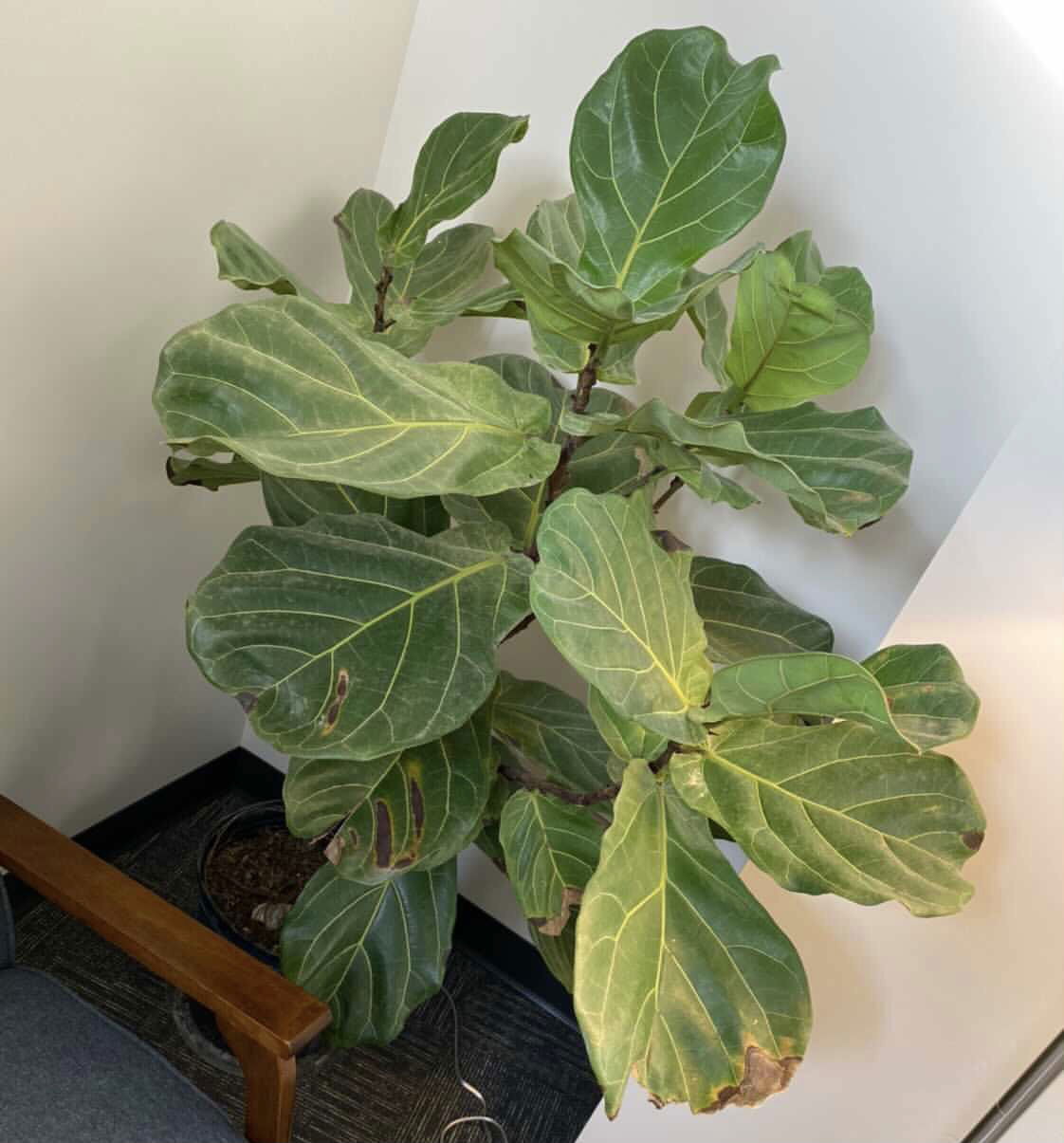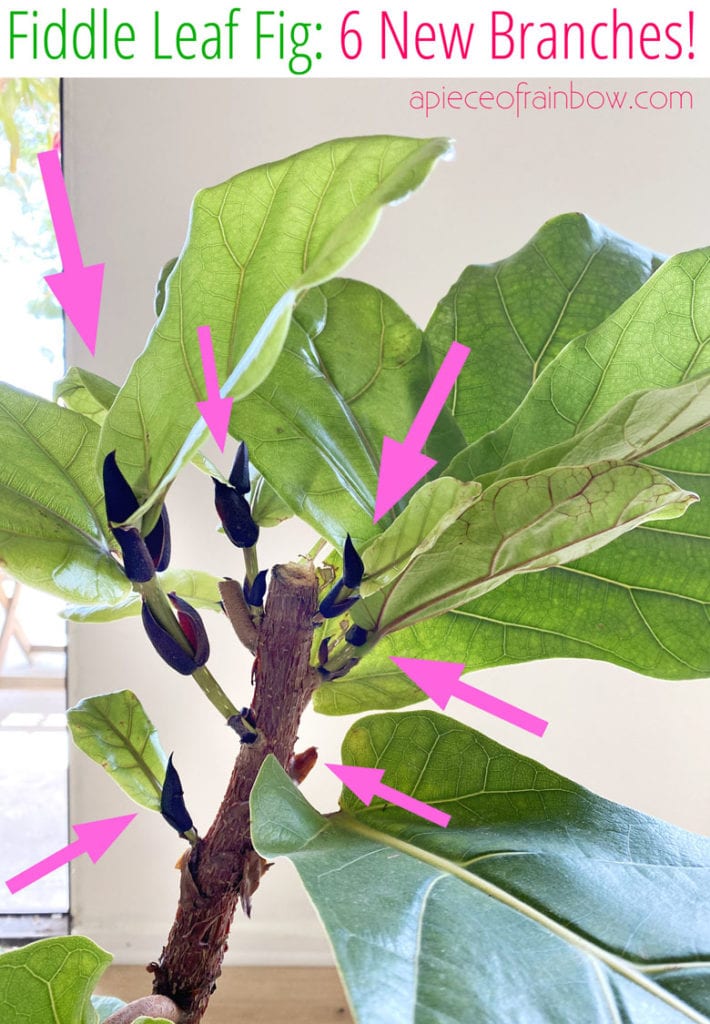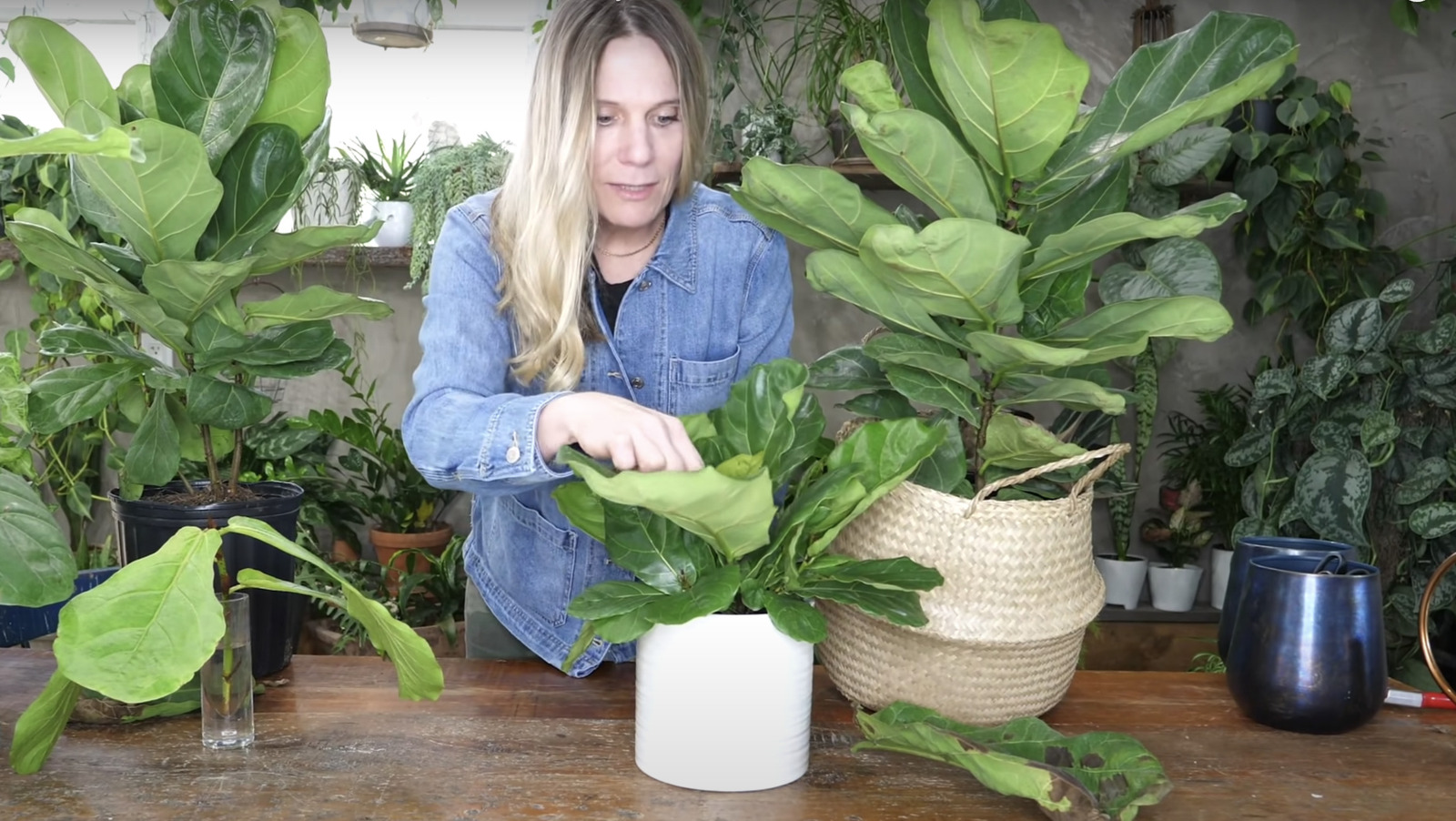Understanding the Needs of Your Fiddle Leaf Fig
Before considering moving your fiddle leaf fig outside, it’s essential to understand its needs and how they impact its ability to thrive in outdoor conditions. Fiddle leaf figs (Ficus lyrata) are native to the tropical regions of West Africa, where they grow in warm, humid environments with plenty of sunlight. To replicate these conditions outdoors, you’ll need to provide your plant with a location that receives bright, indirect sunlight and maintains a consistent temperature between 65-75°F (18-24°C).
Humidity is also a crucial factor in the health and well-being of your fiddle leaf fig. These plants prefer a relatively high humidity, typically above 50%. If you live in a dry climate, you may need to take extra measures to maintain the humidity around your plant, such as using a humidifier or grouping plants together to create a microclimate.
Another critical aspect to consider is the soil quality and drainage. Fiddle leaf figs prefer well-draining soil that is rich in organic matter. If you’re planning to move your plant outside, make sure the soil is suitable for outdoor conditions and won’t waterlog or dry out too quickly.
By understanding the needs of your fiddle leaf fig, you can create an environment that allows it to thrive outside. However, it’s crucial to remember that even with proper care, fiddle leaf figs can be sensitive to extreme weather conditions. If you’re unsure about moving your plant outside, it’s always best to consult with a gardening expert or do further research to ensure you’re making the best decision for your plant’s health.
So, can you put your fiddle leaf fig outside? The answer is yes, but it requires careful consideration and planning. By providing the right conditions and taking the necessary precautions, you can enjoy the benefits of having your fiddle leaf fig outside, such as increased sunlight and improved air circulation.
How to Acclimate Your Fiddle Leaf Fig to Outdoor Conditions
Acclimating your fiddle leaf fig to outdoor conditions is a crucial step in ensuring its success outside. This process involves gradually exposing your plant to outdoor conditions, including sunlight, wind, and temperature fluctuations. By doing so, you’ll help your plant adapt to the new environment and reduce the risk of shock or damage.
To start the acclimation process, begin by moving your fiddle leaf fig to a shaded outdoor area, such as a patio or under a tree, for 1-2 hours a day. This will allow your plant to adjust to the outdoor light and temperature without being exposed to direct sunlight. Gradually increase the duration and frequency of outdoor exposure over the next 7-10 days, monitoring your plant’s response and adjusting the acclimation process accordingly.
During the acclimation process, pay close attention to your plant’s leaves, stems, and soil. If you notice any signs of stress, such as yellowing leaves or droopy stems, it may be necessary to slow down the acclimation process or provide additional protection, such as a shade cloth or windbreak.
Another important aspect of acclimation is temperature. Fiddle leaf figs prefer temperatures between 65-75°F (18-24°C), but can tolerate a range of temperatures. However, sudden changes in temperature can cause stress to the plant. To avoid this, try to maintain a consistent temperature during the acclimation process, and avoid exposing your plant to extreme temperatures, such as those below 55°F (13°C) or above 85°F (29°C).
By following these steps and monitoring your plant’s response, you can successfully acclimate your fiddle leaf fig to outdoor conditions and enjoy the benefits of having it outside. Remember, the key to successful acclimation is gradual exposure and careful monitoring. With patience and attention to detail, you can help your fiddle leaf fig thrive in its new outdoor environment.
So, can you put your fiddle leaf fig outside? With proper acclimation, the answer is yes. By following these steps and taking the necessary precautions, you can enjoy the benefits of having your fiddle leaf fig outside, including increased sunlight and improved air circulation.
Choosing the Right Outdoor Location for Your Fiddle Leaf Fig
When it comes to choosing the right outdoor location for your fiddle leaf fig, there are several factors to consider. One of the most important considerations is sunlight. Fiddle leaf figs prefer bright, indirect sunlight, but can tolerate some direct sunlight. However, too much direct sunlight can cause the leaves to become scorched and the plant to become stressed.
Another important consideration is wind direction. Fiddle leaf figs prefer to be protected from strong winds, which can cause the leaves to become damaged and the plant to become unstable. If possible, choose a location that provides some protection from the wind, such as a spot near a building or a group of trees.
Proximity to other plants is also an important consideration. Fiddle leaf figs prefer to be planted in an area with good air circulation, which can help to prevent disease and pests. However, they can also benefit from being planted near other plants that provide shade and protection from the wind.
To assess your outdoor space and select the best spot for your fiddle leaf fig, start by observing the sunlight patterns in your yard. Note the areas that receive bright, indirect sunlight and those that receive direct sunlight. Also, observe the wind patterns in your yard and note the areas that are protected from strong winds.
Next, consider the soil quality and drainage in your yard. Fiddle leaf figs prefer well-draining soil that is rich in organic matter. If your soil is heavy clay or sandy, you may need to amend it with organic matter such as compost or manure.
Finally, consider the aesthetic appeal of your outdoor space. Fiddle leaf figs are beautiful plants that can add a touch of elegance to any outdoor space. Choose a location that showcases your plant’s beauty and provides a pleasant view.
By considering these factors and choosing the right outdoor location for your fiddle leaf fig, you can help ensure that your plant thrives and provides you with years of enjoyment. So, can you put your fiddle leaf fig outside? With the right location and care, the answer is yes.
Protecting Your Fiddle Leaf Fig from Extreme Weather Conditions
When moving your fiddle leaf fig outside, it’s essential to protect it from extreme weather conditions that can cause damage or even kill the plant. Frost, heatwaves, and heavy rainfall are just a few examples of weather conditions that can be detrimental to your fiddle leaf fig.
Frost is a significant threat to fiddle leaf figs, as it can cause the leaves to become damaged or even kill the plant. To protect your fiddle leaf fig from frost, bring it indoors during the winter months or use a frost blanket to cover the plant. You can also use anti-desiccant sprays to protect the leaves from wind and cold temperatures.
Heatwaves can also be a problem for fiddle leaf figs, as they can cause the leaves to become scorched and the plant to become stressed. To protect your fiddle leaf fig from heatwaves, provide it with some shade, especially during the hottest part of the day. You can also use a misting system to keep the leaves cool and hydrated.
Heavy rainfall can also be a problem for fiddle leaf figs, as it can cause the soil to become waterlogged and the roots to rot. To protect your fiddle leaf fig from heavy rainfall, make sure the soil drains well and avoid getting water on the leaves or crown of the plant. You can also use a rain cover or bring the plant indoors during heavy rainfall.
In addition to these protective measures, it’s also essential to monitor the weather forecast and be prepared to take action if extreme weather conditions are predicted. By taking these precautions, you can help ensure that your fiddle leaf fig remains healthy and thrives outside.
So, can you put your fiddle leaf fig outside? With proper protection from extreme weather conditions, the answer is yes. By taking the necessary precautions, you can enjoy the benefits of having your fiddle leaf fig outside, including increased sunlight and improved air circulation.
Pest and Disease Management for Outdoor Fiddle Leaf Figs
When moving your fiddle leaf fig outside, it’s essential to be aware of the potential pests and diseases that can affect your plant. Outdoor conditions can expose your fiddle leaf fig to a range of pests and diseases that can cause damage or even kill the plant.
Some common pests that can affect fiddle leaf figs outdoors include spider mites, mealybugs, and scale. These pests can cause damage to the leaves and stems of your plant, and can also transmit diseases. To manage these pests, use organic or chemical control methods, such as insecticidal soap or neem oil.
Diseases such as root rot, leaf spot, and powdery mildew can also affect fiddle leaf figs outdoors. These diseases can cause damage to the roots, leaves, and stems of your plant, and can also spread quickly if left untreated. To manage these diseases, use fungicides or bactericides, and also practice good hygiene, such as removing infected leaves or stems.
Prevention is key when it comes to managing pests and diseases on your fiddle leaf fig. Regularly inspect your plant for signs of pests or diseases, and take action quickly if you notice any issues. Also, make sure to provide your plant with good air circulation, water it properly, and fertilize it regularly to keep it healthy and strong.
By being aware of the potential pests and diseases that can affect your fiddle leaf fig, and taking steps to prevent and manage them, you can help ensure that your plant remains healthy and thrives outside. So, can you put your fiddle leaf fig outside? With proper care and management, the answer is yes.
Some additional tips for managing pests and diseases on your fiddle leaf fig include:
- Use physical barriers, such as fine mesh or fine netting, to prevent pests from reaching your plant.
- Use sticky traps or yellow traps to capture and remove pests.
- Practice good hygiene, such as removing infected leaves or stems, and disinfecting your tools and equipment.
- Use biological control methods, such as introducing beneficial insects or microorganisms, to control pests and diseases.
Fertilization and Watering Strategies for Outdoor Fiddle Leaf Figs
When it comes to fertilizing and watering your fiddle leaf fig outdoors, it’s essential to understand the specific needs of your plant. Fiddle leaf figs require a balanced fertilizer that provides the necessary nutrients for healthy growth and development.
A balanced fertilizer with a ratio of 20-20-20 (nitrogen-phosphorus-potassium) is ideal for fiddle leaf figs. You can also use a fertilizer that is specifically formulated for tropical plants, as fiddle leaf figs are native to tropical regions.
When it comes to watering, fiddle leaf figs prefer well-draining soil and should be watered carefully to avoid overwatering. Check the soil moisture by inserting your finger into the soil up to the first knuckle. If the soil feels dry, it’s time to water your plant.
Water your fiddle leaf fig thoroughly, making sure the pot drains well to prevent waterlogged soil. Avoid getting water on the leaves or crown of the plant, as this can cause rot and other problems.
Adjust your fertilization and watering schedules based on weather conditions and plant response. During hot and dry weather, your fiddle leaf fig may require more frequent watering. During cool and rainy weather, you may need to reduce watering and fertilization.
Soil moisture monitoring is also essential for outdoor fiddle leaf figs. Use a soil moisture meter to check the moisture levels in the soil, and adjust your watering schedule accordingly.
By providing your fiddle leaf fig with the right fertilization and watering strategies, you can help ensure that it thrives outdoors. So, can you put your fiddle leaf fig outside? With proper care and attention, the answer is yes.
Some additional tips for fertilizing and watering your fiddle leaf fig outdoors include:
- Use a fertilizer that is specifically formulated for tropical plants.
- Water your fiddle leaf fig thoroughly, making sure the pot drains well.
- Adjust your fertilization and watering schedules based on weather conditions and plant response.
- Use a soil moisture meter to check the moisture levels in the soil.
Pruning and Training for Optimal Outdoor Growth
Pruning and training are essential for optimal outdoor growth of your fiddle leaf fig. Pruning helps to maintain the shape of the plant, promote healthy growth, and encourage fruiting. Training involves providing support for the plant to grow upright and maintain its shape.
When pruning your fiddle leaf fig, remove any dead or damaged leaves or stems. This will help to prevent the spread of disease and encourage healthy growth. Use a pair of clean, sharp pruning shears to make cuts just above a node (where a leaf meets the stem).
Training your fiddle leaf fig involves providing support for the plant to grow upright. You can use a stake or trellis to provide support for the plant. Make sure to tie the plant to the stake or trellis loosely, as you want to allow for some movement in the wind.
Pruning and training can also help to encourage fruiting in your fiddle leaf fig. Fruiting occurs when the plant is mature and has reached a certain size. Pruning and training can help to promote healthy growth and encourage the plant to produce fruit.
Some additional tips for pruning and training your fiddle leaf fig include:
- Prune your fiddle leaf fig regularly to maintain its shape and promote healthy growth.
- Use a stake or trellis to provide support for the plant to grow upright.
- Make sure to tie the plant to the stake or trellis loosely, as you want to allow for some movement in the wind.
- Pruning and training can help to encourage fruiting in your fiddle leaf fig.
By pruning and training your fiddle leaf fig, you can help to ensure that it grows and thrives outdoors. So, can you put your fiddle leaf fig outside? With proper care and attention, the answer is yes.
Common Mistakes to Avoid When Moving Your Fiddle Leaf Fig Outdoors
When moving your fiddle leaf fig outdoors, there are several common mistakes to avoid. These mistakes can cause stress to the plant, lead to disease or pest issues, and even result in the death of the plant.
One of the most common mistakes is sudden changes in environment. Fiddle leaf figs prefer a gradual transition from indoor to outdoor conditions. Avoid moving your plant directly from a warm, humid indoor environment to a cold, dry outdoor environment.
Inadequate acclimation is another common mistake. Acclimation is the process of gradually exposing your plant to outdoor conditions. This process can take several weeks to several months, depending on the plant’s sensitivity and the outdoor conditions.
Poor soil quality is also a common mistake. Fiddle leaf figs prefer well-draining soil that is rich in organic matter. Avoid using soil that is heavy clay or sandy, as this can cause waterlogging or drought.
Other common mistakes to avoid include:
- Not providing enough light: Fiddle leaf figs prefer bright, indirect light. Avoid placing your plant in a shaded area or under a tree.
- Not providing enough water: Fiddle leaf figs prefer moist soil, but not waterlogged soil. Avoid overwatering your plant, as this can cause root rot.
- Not providing enough nutrients: Fiddle leaf figs prefer a balanced fertilizer that is rich in nutrients. Avoid using a fertilizer that is high in nitrogen, as this can cause the plant to become leggy.
By avoiding these common mistakes, you can help ensure a successful transition to outdoor growth for your fiddle leaf fig. So, can you put your fiddle leaf fig outside? With proper care and attention, the answer is yes.







